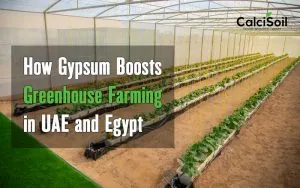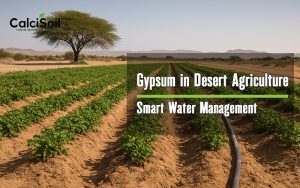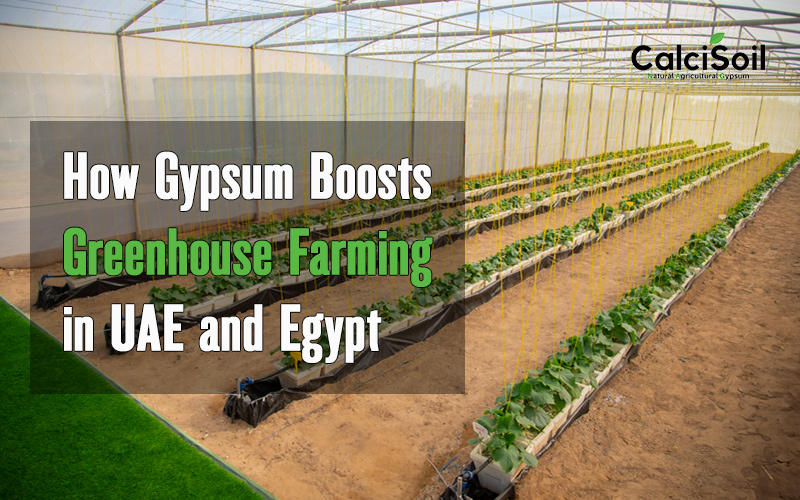
Understanding Greenhouse farmingChallenges in Arid Regions
Greenhouse farming in arid regions like the UAE and Egypt is a lifeline for producing fresh vegetables, herbs, and flowers throughout the year. These regions face intense sunlight, low humidity, saline irrigation water, and poor natural soil fertility. Inside greenhouses, the goal is to create a balanced environment that protects crops from external stress while optimizing soil and water efficiency.
Yet, even under controlled conditions, growers struggle with soil compaction, salt accumulation, and nutrient imbalance. That’s why agricultural gypsum is becoming an essential tool for building resilient, productive greenhouse systems suited to hot climates.
How Gypsum Improves Greenhouse Soils
Gypsum, or calcium sulfate dihydrate, is more than just a source of calcium and sulfur—it’s a soil conditioner that transforms the physical and chemical properties of greenhouse soils. In reused or compacted growing media, gypsum improves aggregation and increases porosity, allowing air and water to move freely through the root zone. This prevents the “hard pan” effect common in soils exposed to continuous irrigation.
Calcium from gypsum replaces sodium on soil particles, reducing salinity and improving root permeability. The sulfur content, meanwhile, supports protein formation and overall plant vigor. The result is a healthier soil environment where plants can access nutrients and water more efficiently, leading to stronger roots, greener foliage, and more uniform growth across the greenhouse.
Gypsum’s Role in Addressing Salinity Stress
Salinity is one of the biggest threats to greenhouse productivity in arid zones. Irrigation water in the UAE and Egypt often contains high levels of sodium and dissolved salts, which gradually accumulate in the soil profile. Excess sodium disrupts soil structure, blocks nutrient absorption, and causes physiological drought in plants—even when water is abundant.
Applying gypsum helps counter this problem naturally. As gypsum dissolves, calcium ions replace sodium ions, allowing harmful salts to leach deeper below the root zone. Over time, this restores soil balance, reduces salt stress, and supports better yields without the need for expensive chemical treatments.
Practical Application in UAE and Egypt Greenhouses
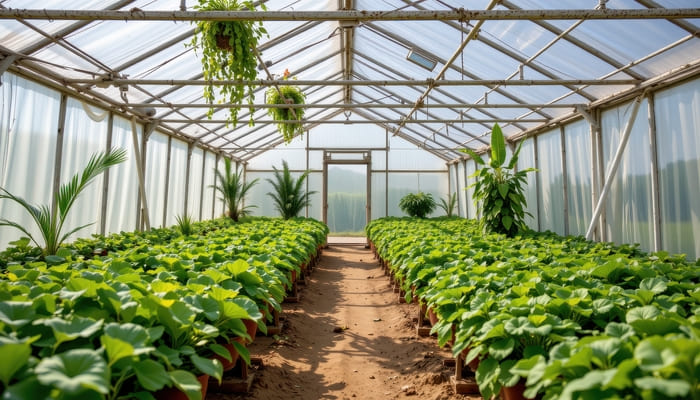
To maximize benefits, the timing and method of gypsum application are crucial. In greenhouse systems, gypsum can be applied before planting, between cropping cycles, or through fertigation. Farmers typically spread 0.5 to 1 ton per hectare (depending on soil salinity and texture) and lightly mix it into the topsoil or substrate. In cases of severe salinity or reused soils, slightly higher doses may be needed initially.
Recommend you to read the article “Best time to apply gypsum in hot climates“.
For hydroponic-style greenhouses that use cocopeat or sand-based substrates, gypsum can be introduced in soluble form through irrigation water. This ensures even calcium distribution without disturbing the root system. Many Egyptian growers report improved tomato firmness and fewer blossom-end rot cases after consistent gypsum use—an effect directly linked to better calcium uptake and lower salt accumulation.
Enhancing Water Efficiency and Root Health
One often overlooked benefit of gypsum in greenhouse farming is improved water management. In arid climates where every drop counts, gypsum enhances water infiltration and retention. The improved soil structure allows irrigation water to reach roots evenly rather than running off or pooling at the surface.
This not only reduces water waste but also minimizes oxygen stress in roots, which can occur in compacted soils. With regular gypsum use, plants develop deeper root systems capable of withstanding brief irrigation gaps—an important advantage during high summer temperatures.
Combining Gypsum with Sustainable Practices
For the best results, gypsum should be part of an integrated greenhouse management system. Combining it with organic composts, balanced fertilization, and periodic substrate aeration creates a thriving soil ecosystem. Organic matter provides the carbon that feeds beneficial microbes, while gypsum enhances structure and chemical balance. Together, they create a self-sustaining foundation that reduces the need for constant corrective measures and extends the productive life of the growing media.
Many UAE growers are adopting this approach, using gypsum alongside efficient drip irrigation and controlled-environment technologies. The result is higher yield consistency, reduced input costs, and stronger crop resilience even under extreme external conditions.
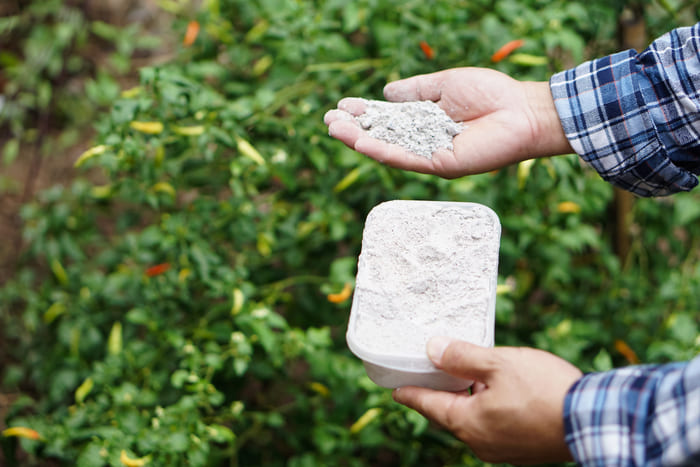
Long-Term Benefits and Economic Impact
While the effects of gypsum are noticeable within a single season, its real power emerges over time. Continuous application helps maintain soil structure, lower salinity levels, and reduce fertilizer losses.
As soil health improves, growers can rely less on frequent flushing or soil replacement—saving both water and money. Studies in arid greenhouses have shown that gypsum can reduce irrigation needs by up to 20% while improving nutrient-use efficiency. These cumulative benefits make gypsum an economically smart investment for long-term greenhouse success in hot regions.
Conclusion
In the demanding conditions of greenhouse farming across the UAE and Egypt, resilience is key. Agricultural gypsum offers a science-backed, sustainable way to strengthen that resilience. By improving soil structure, reducing salinity, and enhancing water efficiency, gypsum enables growers to produce healthier, higher-quality crops year after year. It’s not just an additive—it’s a foundation for sustainable horticulture in the desert.



